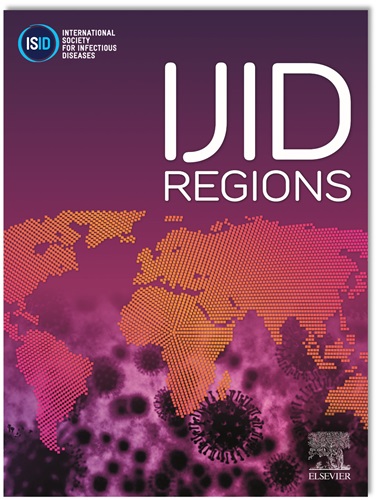Plasmid profile analysis of Escherichia coli isolates recovered from the beef production chain
IF 4.8
2区 医学
Q1 INFECTIOUS DISEASES
引用次数: 0
Abstract
Introduction
Resistance plasmids play a vital role in the tranmission of antibiotic resistance genes (ARGs) from animals to humans through the food chain. Thus food contamination at various production points have served as portal of entry for plasmid mediated resistance to humans. However, there is a dearth of data on the level of contamination at various production points in the Gauteng region. In this study, therefore, E. coli isolates originating from the beef production chain were assessed for their plasmid content and to determine the distribution of incompatibility (Inc) groups and associated antibiotic resistance along the beef production chain in the Gauteng region, South Africa.
Methods and Materials
E. coli isolates in this study were obtained in Gauteng province, South Africa, during 2015-2017 from three sources; cattle feedlot (faeces), beef abattoirs (carcass swabs, environment, faeces) and retail outlets (raw beef and ready to eat (RTE) beef products). Whole genome sequencing on MiSeq-illumina platform was used to sequence the isolates, Plasmidfinder for in silico detection and typing of plasmids of E. coli and Resfinder database for antimicrobial resistance genes.
Results
A total of 242 plasmids were identifed in genomes of 79 isolates recovered from the beef production chain, of which 43.8%(106) originated from the feedlot, 33.8%(82) abatoir and 22.4%(55) from retail outlets. A larger percentage of the plasmids belonged to the IncF group (61.2%;148), follwed by Colicinogenic (Col) plasmids (20.7%;50) and IncX (5%;12). Inc F, Q, X, B/O/K/Z, p0111 and Col stood out because they were found across the entire beef production chain. We identified 215 ARGs belonging to 8 antibiotic classes, of which macrolide and tetracycline (38.1%; 82) ranked top, followed by amynoglycosides (10.2%;22) and beta-lactamases (1.4%;3) the lowest. Two isolates were notable; faecal isolate (GdH35-2) from the abattoir haboured ten plasmids and nine ARG's, and retail isolate SSL5_1, five plamids and nine ARGs.
Discussion
In this study, Inc F, Q, X, B/O/K/Z, p0111 and Col plasmid groups were detected across the entire beef production chain, of which IncF-groups (61.2%;148/242) had the highest frequency. This observation have multiple public health implications, as it confirms the presence of food-borne plasmids in the beef chain in the region, moreso, these plasmid represents reservoirs of resistance genes which increases the likelihood of genetic transfer. Furthermore, the high occurrence of tetracycline (mostly plasmid-mediated) and macrolide resistance genes reflects the misuse of antibiotics in the livestock industry in the study area.
Conclusion
This study provides evidence of food-borne plasmids in the beef production chain in the Gauteng province, and its far-reaching public health implications. Given the livestock-human link with respect to resistance to antibiotics, an urgent review of its use as growth promoters in food animals is highly recommended.
求助全文
约1分钟内获得全文
求助全文
来源期刊
CiteScore
18.90
自引率
2.40%
发文量
1020
审稿时长
30 days
期刊介绍:
International Journal of Infectious Diseases (IJID)
Publisher: International Society for Infectious Diseases
Publication Frequency: Monthly
Type: Peer-reviewed, Open Access
Scope:
Publishes original clinical and laboratory-based research.
Reports clinical trials, reviews, and some case reports.
Focuses on epidemiology, clinical diagnosis, treatment, and control of infectious diseases.
Emphasizes diseases common in under-resourced countries.

 求助内容:
求助内容: 应助结果提醒方式:
应助结果提醒方式:


